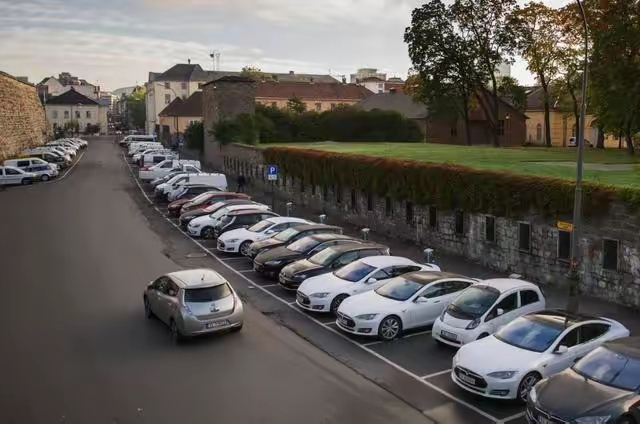
In the wave of global automotive industry's transition to electrification, Europe has taken solid steps in the field of electric vehicles through policy promotion, technological accumulation, and the popularization of environmental awareness. However, in recent years, the development of the European electric vehicle industry has encountered many bottlenecks, and its future prospects have attracted widespread attention and reflection.
The European electric vehicle market once showed a vigorous development trend. At the policy level, governments around the world have introduced preferential policies such as car purchase subsidies and tax reductions to reduce carbon emissions and promote the development of green transportation, greatly stimulating consumers' enthusiasm for purchasing electric vehicles. In Norway, the proportion of electric vehicle sales is extremely high, which is closely related to the local government's long-term policies such as car purchase discounts, free parking, and free use of public charging facilities. Thanks to favorable policies, the sales of electric vehicles in Europe continue to rise. Many local car companies such as Volkswagen, BMW, Mercedes Benz, etc. have increased their investment in the field of electric vehicles and launched a series of new models.
The European electric vehicle industry is also facing severe challenges. From a market perspective, although sales have increased, the growth rate is gradually slowing down. In contrast, the electric vehicle market in Asia, especially in China, is developing rapidly. Not only are local brands rising, but the market size is also constantly expanding. The European market is facing the risk of gradually eroding its share in the global electric vehicle market. In terms of cost, the production and operation costs of electric vehicles in Europe remain high. The high labor cost and incomplete supply chain of key components such as batteries have led to relatively high vehicle prices, weakening the market competitiveness of the product.
The completeness of charging infrastructure directly affects the promotion and popularization of electric vehicles. Although there has been some progress in the construction of charging stations in Europe, the overall layout is still not reasonable, with problems of insufficient quantity and uneven distribution. In the central urban areas, the number of charging stations is difficult to meet the growing demand for electric vehicle charging, and the phenomenon of queuing for charging often occurs; In remote areas, the coverage of charging stations is extremely low, which severely limits the use of electric vehicles and increases consumers' "range anxiety".
Faced with numerous challenges, the European electric vehicle industry needs to take multiple measures to find a way out. In terms of technological innovation, increasing investment in research and development is key. European governments and businesses should work together to establish joint research and development centers, concentrating their advantageous resources to tackle core challenges such as battery technology and autonomous driving technology. The government can encourage enterprises to engage in industry university research cooperation and accelerate the transformation of technological achievements by establishing special scientific research funds, providing tax incentives, and other means. European car companies should strengthen cooperation with Asian battery companies, introduce advanced technology and production experience, improve their own battery technology level and production efficiency, and reduce costs.
The construction of charging infrastructure needs to be accelerated. European countries should develop a unified plan for the construction of charging stations, increase funding investment, and improve the coverage and layout rationality of charging stations. Special attention should be paid to building charging stations in remote areas, highway service areas, and other places to eliminate consumers' "mileage anxiety". At the same time, unifying charging standards and improving the compatibility of charging stations ensure that electric vehicle users can conveniently charge across Europe. The government can encourage social capital to participate in the construction and operation of charging stations through subsidies, policy support, and other means, forming a diversified investment pattern.
The European electric vehicle industry still needs to expand its market space. On the one hand, we will deeply cultivate the local market, develop diversified electric vehicle products according to the needs of different consumer groups, and meet personalized travel needs. Strengthen brand building and marketing, enhance the image and recognition of European electric vehicle brands in the minds of consumers. On the other hand, actively exploring international markets, especially emerging markets such as Asia and Africa. By leveraging Europe's traditional technological advantages and brand influence in the automotive manufacturing field, and combining local market characteristics, we aim to launch electric vehicle products that meet local demands and expand the global market share of European electric vehicles.
Although the European electric vehicle industry faces many challenges, there is still a way forward. By taking effective measures in technological innovation, infrastructure construction, market expansion, and other aspects, European electric vehicles are expected to break through difficulties, regain their competitive advantage in the global electric vehicle industry, and achieve sustainable development.

Below is the English translation of the text, with precise handling of political terms, consistent sentence structures, and preservation of the original’s analytical tone and logical flow:
Below is the English translation of the text, with precise …
On December 15 local time, Trump took the British Broadcast…
In recent years, the application of artificial intelligence…
According to Yahoo US media reports, the recent remarks of …
After 11 years of waiting in the deep sea, we finally have …
On December 17, 2025, the newly renovated American "Preside…